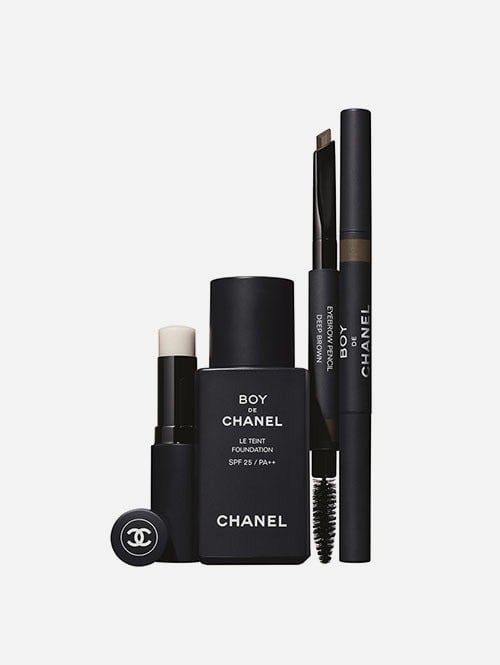Chanel’s men’s makeup line is the first for a major brand, but it won’t be the last
Chanel announced this week that it will be launching its first makeup line for men in South Korea on Sept. 1. The three-product line includes a tinted fluid foundation in four shades, a matte lip balm, and an eyebrow pencil, also in four shades.


Chanel announced this week that it will be launching its first makeup line for men in South Korea on Sept. 1. The three-product line includes a tinted fluid foundation in four shades, a matte lip balm, and an eyebrow pencil, also in four shades.
Dubbed “Boy de Chanel,” a play on Boy Capel, the lover and muse of Coco Chanel, the makeup line is the first from a major prestige designed specifically for men.

The premise of the line, Chanel says, is “beauty is not a matter of gender, it is a matter of style.” It’s a growing sentiment in the industry, with other major brands like Covergirl and Maybelline tapping male beauty gurus as spokespeople.
Chanel is the first prominent legacy brand with its own dedicated makeup line, but it certainly won’t be the last.
Beauty for men is a big business
A 2016 report by the firm Allied Market Research noted that the men’s grooming market will garner $166 billion in sales by 2022 at a compound growth rate of 5.4% from 2016. For context, the entire cosmetics market is expected to reach a market value of $806 billion by 2023.
Makeup is still largely unchartered territory for major brands, but cosmetics giants have steadily introduced an array of new skincare products aimed specifically at men: Companies like L’Oreal (e.g. Men’s Expert) and Estée Lauder (e.g. Lab Series and Clinique for Men) have spent years investing in their own men’s skincare lines—with lotions, toners, and wrinkle creams for men—and adjusting their advertising to focus less on gender identification and sexuality and more on inclusivity (paywall).
Meanwhile, a slew of niche firms and startups are changing the way beauty is sold to men. Companies such as Hims (hair loss and skincare), Keeps (hair loss), Carpe (antiperspirant), and TrueSons (hair dye), are raising millions in VC funding, and part of their strategy is to ditch the hypermasculine, whiskey-and-cigars marketing typical of men’s grooming, in favor of gender-neutral packaging and ads.
All this indicates a shift in men’s grooming culture, away from the grunty locker rooms of male antiperspirant ads and the shame-y dramatizations of hair loss product infomercials. And now that an iconic legacy brand like Chanel has boldly entered the makeup space, its competitors are likely to follow suit. And that’s a step toward a less binary—and ultimately more inclusive—beauty industry.